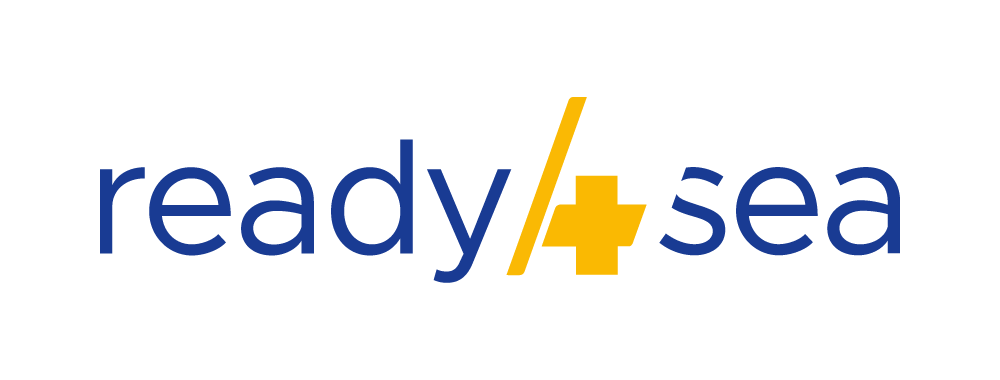The Ultimate Guide to Choosing Your First Sailboat
Have you caught the sailing bug and now dream of buying your very own sailboat? Selecting the perfect boat can be a daunting task, especially for beginners. To ensure you make the right choice, it’s essential to consider your desired sailing activities, crew size, and budget.
In this comprehensive guide, we’ll provide you with valuable insights and tips to help you choose your first sailing boat, tailored to your needs, preferences, and budget. So, let’s set sail on this exciting journey to find your dream boat!
First off: What will you use your boat for?
Your sailboat choice will mainly depend on your intended use, crew size, and budget. There are numerous ways to sail, and each calls for a different type of boat. Here are some popular sailing activities to consider:
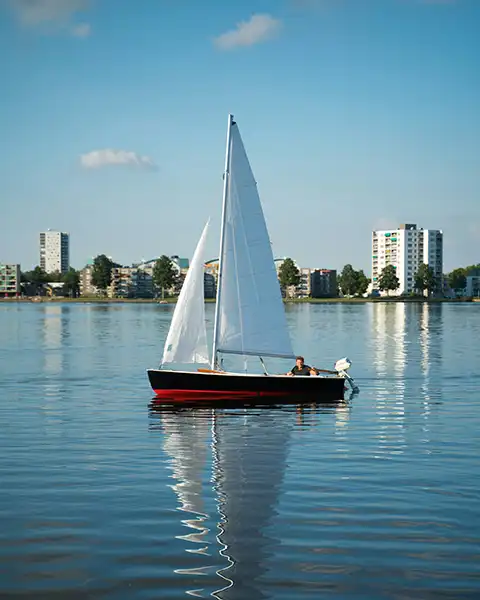
Day Sailing
If you’re planning on enjoying day trips on protected waters, a simple “flush deck” boat will do the trick. These are known as daysailers or dayboats and generally have no superstructure. Alternatively, you could choose a sailboat with a small cabin for slightly more adventurous outings.
Coastal Cruising
For longer excursions along the coast with family or friends, prioritize a comfortable and secure cruiser with ample living space and suitable accommodation capacity.
Offshore Cruising
If you plan to sail offshore and undertake long voyages, opt for a robust, seaworthy and well-equipped sailboat to handle various weather conditions.
Learning to Sail
For beginners, a stable and maneuverable dinghy or small keelboat is ideal for learning the basics and honing your sailing skills.
Racing
If you’re passionate about competition and speed, choose a fast and maneuverable sailboat, such as a lightweight dinghy or sport keelboat. Be sure to research existing fleets in your area, as having competitors makes racing more enjoyable.
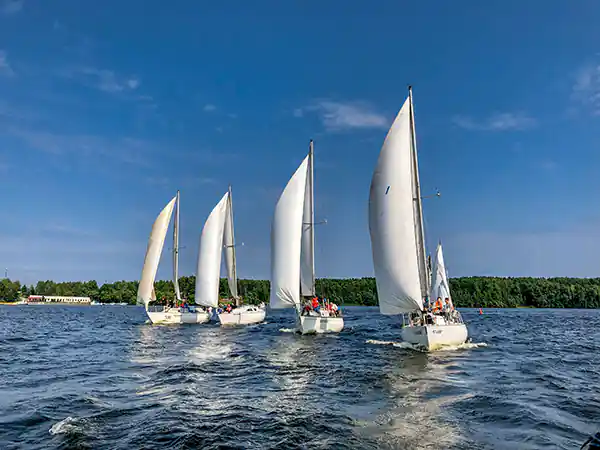
Who will be your crew?
Your sailboat choice will also depend on the number of people in your crew and their experience level. Consider the number of available berths onboard and the task distribution among crew members.
If you plan to sail solo or with a shorthanded crew, choose an easy-to-handle sailboat of modest size. A small dinghy or coastal cruiser may be suitable for this type of navigation.
As a beginner, opt for a simple and manageable sailboat with a straightforward rig. Only choose a more technical and high-performance sailboat if you’re confident you’ll have experienced crew members to assist you.
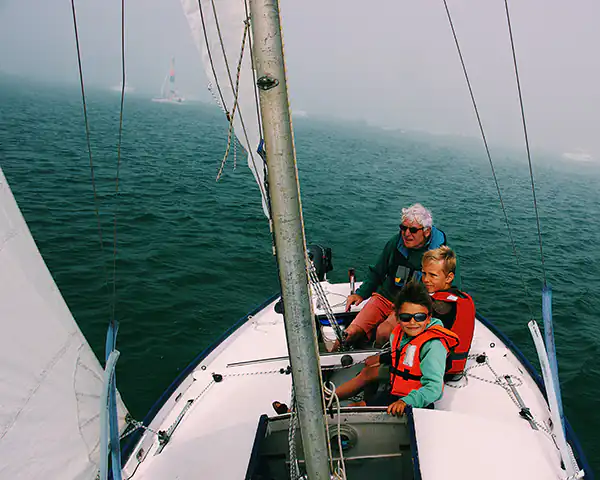
Types of sailing boats
Your chosen activity will guide your boat type selection. Here are a few examples:
Dinghies
These boats are fast, responsive, and perfect for learning sailing basics and introducing yourself to racing. They require good physical fitness and flexibility.
Keelboats
They offer better stability and are suitable for sailing on more exposed waters or even offshore. They can be modest in size for coastal cruising or larger for offshore cruising.
Swingkeelers, lifting keelers and centerboarders
Thanks to their retractable appendages, these boats can give you access to shallow areas. They can be a suitable choice depending on where you plan to sail or moor your boat. By some standards, these boats are considered suitable for travel or expeditions.
Multihulls
Catamarans are very stable due to their two hulls and offer ample living space. They are ideal for cruising with family or friends, but their size may make finding a berth challenging.
Trimarans are also stable and fast but may be more technical with reduced living space.
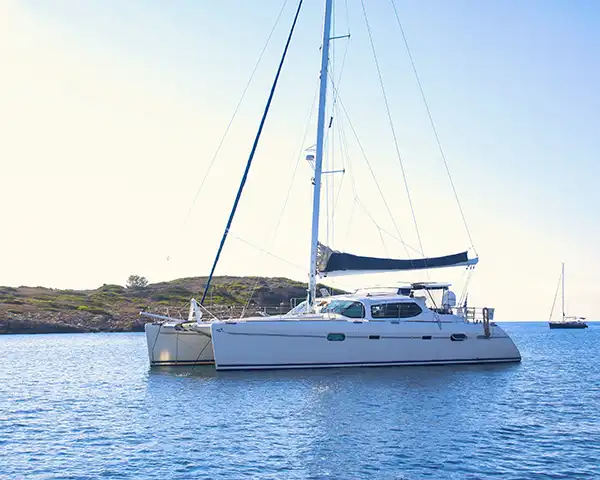
Budget and boat size
The price of sailboats generally increases with their size, so the larger the boat, the more substantial your budget should be. A larger boat will also incur higher maintenance, insurance, and berth costs. Conversely, smaller boats are easier to berth.
New or used?
Will you buy your first sailboat new or used? A new boat offers advantages such as a manufacturer’s warranty and the ability to customize certain equipment. However, a new boat will typically be more expensive than a used one and lose value faster.
The used market can offer great deals, but you’ll need to pay close attention to the boat’s condition and plan for potential renovation or maintenance work. Serious maintenance tracking by the seller is a definite plus. Ideally, you should have a traceable history, such as the one provided by Ready4Sea. You can also seek professional assistance.
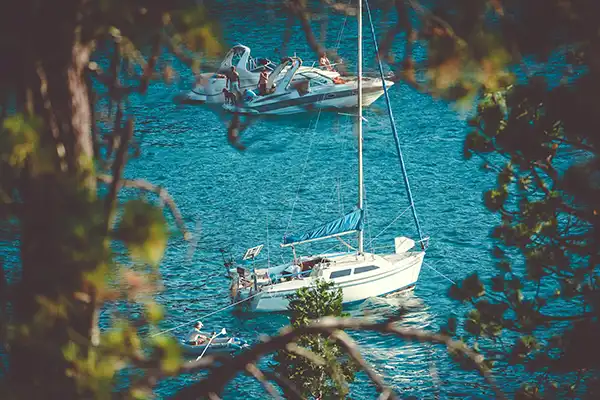
First sailboat selection criteria
Stability and maneuverability
For beginners, it’s essential to choose a stable and easy-to-maneuver sailboat. Good maneuverability will simplify mooring and docking, as well as any maneuver underway. A fin keel will make your boat more maneuverable than a long keel. A tiller will allow you to feel the rudder way better than a wheel.
Finally, if the sailboat you’re looking to acquire is fitted with an engine, make sure you’ve tested and mastered the propeller pitch and tried backing with it.
Comfort
Comfort equipment will make for an enjoyable sailing experience. Depending on your preferences and budget, you can opt for a simple sailboat without a cabin or a model equipped with berths, a kitchen, or even a shower. Also consider storage space and passenger capacity when making your choice.
Sails and rigging
The type of sail and rigging influence your sailboat’s ease of use and performance. Sloops, equipped with a mainsail and a jib, are the most common and easiest to maneuver. Ketches, yawls, and other rigs are more suited to specific navigations or experienced sailors.
Masthead rigs are the most common and easiest to use for beginners. Fractional rigs, with a headsail that does not reach the masthead, are often more technical and fragile. Sailboats equipped with self-tacking jibs are becoming more common nowadays, making tacking easier.
Keel
It’s an essential element for the sailboat’s stability. Sailboats with fixed keels offer better stability and are suitable for offshore sailing. The deeper the keel, the stiffer the boat will be under sail. It will heel less, but the possibilities will be more limited and navigation will require all the more attention and skill.
Sailboats with swingkeels or retractable centerboards are more versatile but require specific maintenance. They enable you to navigate in shallow waters and access anchorages that are less accessible than with a fixed keel.
Instruments and electronics
For beginners, basic equipment including a compass, VHF radio, and GPS is sufficient. Electronics can quickly become expensive, and it’s easy to fall into the pitfall of over-equipment when looking for a sense of security. On the contrary, starting with simple equipment will help hone your seamanship skills.
And in any case, are you sure you want to devote a significant part of your budget to electronics? It’s up to you to decide whether you’d like more features, such as an autopilot, chart plotter, AIS or radar. These can always be added later on.
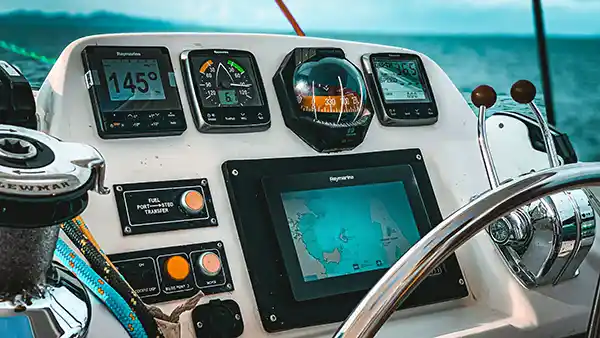
Don’t buy a boat for its electronics.
Some sailboats for beginners
It’s inevitably difficult to make a recommendation, if only because there are thousands of different models to choose from. However, in case you’re struggling to identify a model that’s right for you, here’s our selection of some sailboats that may be appropriate for beginners. However, these are just a few examples of the many models suitable for a first purchase!
Bénéteau First 21.7
This 6.40-meter sailboat is ideal for beginners, with a simple rig and a retractable keel. It offers a good balance between performance and comfort.
J/80
This 8-meter sailboat is known for being easy to handle, making it ideal for learning to race or for sporty family sailing.
Sun Odyssey 349
This recent 10-meter sailboat, built by Jeanneau, is a popular choice for beginners. It offers a good level of comfort and performance for coastal or offshore cruising.
Catalina 22
This American 6.70-meter sailboat is an affordable option for beginners. It’s simple, reliable, and has a comfortable interior for short cruises.
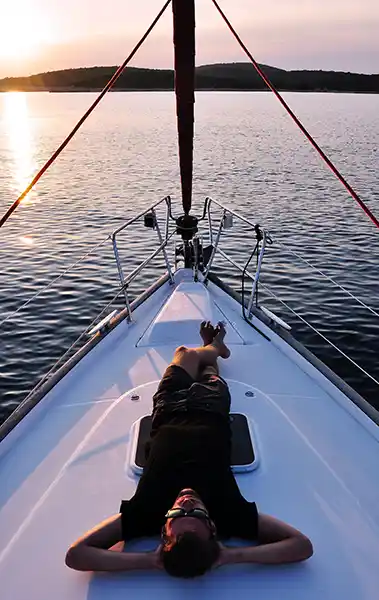
The choice is yours!
Choosing your first sailboat is a crucial step towards an enjoyable and safe sailing experience. Consider your needs, preferences, and experience level when selecting the right sailboat. Your desired activity, crew type, and budget are essential factors to guide your choice.
Your first sailboat will be the starting point of an exciting adventure in the world of sailing. And don’t forget: the best sailboat is the one you can afford, and the one you can sail easily!
